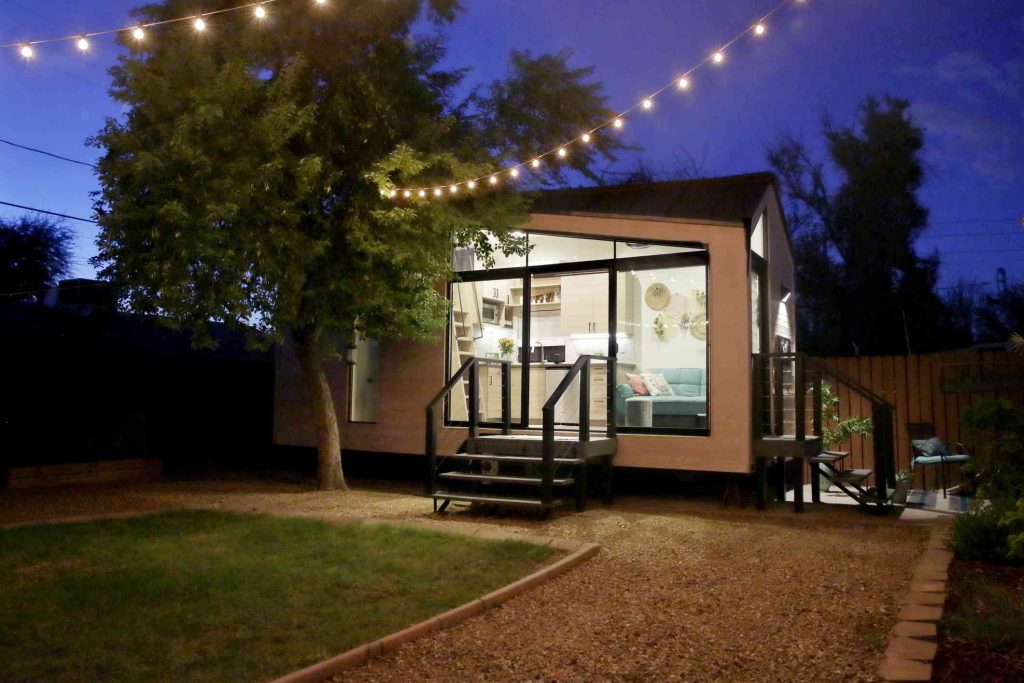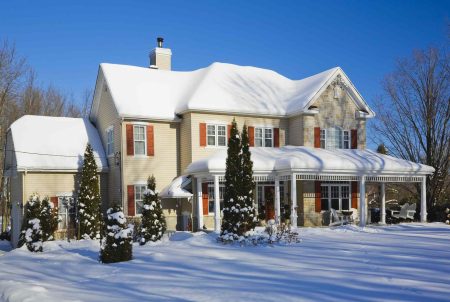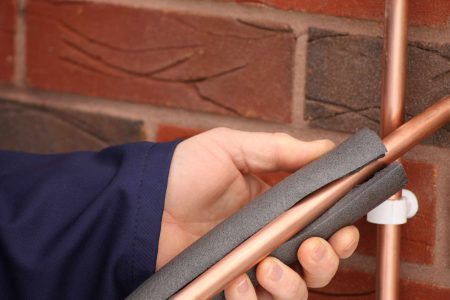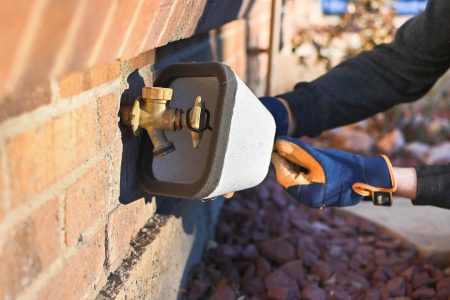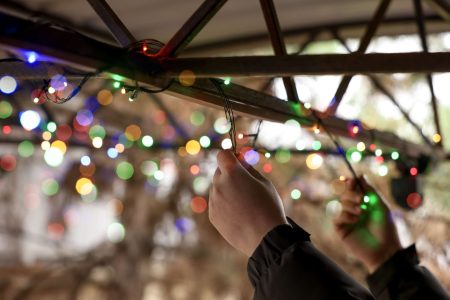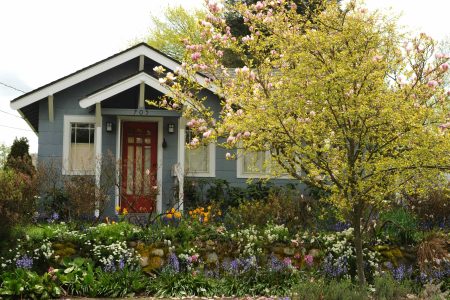An ADU or accessory dwelling unit is a fresh take on an old idea. For years, some homes have had secondary houses on the property where an aging parent or a renter lived. But that concept has now expanded to include a broad range of structures for an ever-growing variety of uses.
With many municipalities encouraging ADU construction with streamlined zoning and permitting, ADUs are becoming a more attractive—and often, lucrative—option for properties and their owners.
What Is an ADU?
Accessory dwelling units (ADUs) are secondary living units that are located on the same property lot as a primary living unit. Usually, the secondary unit is smaller than the primary structure.
What an ADU Is
When a house or other large living structure on a lot has a second living unit, that unit is called an accessory dwelling unit. ADU is an official designation adopted by many government agencies and most of the building industry.
A highly malleable concept, ADUs go by names like backyard cottage, guesthouse, carriage house, or granny flat, and can include everything from separate buildings to attached additions.
Sometimes, the term is refined to differentiate between detached and attached ADUs. A detached ADU, such as a backyard cottage, is a DADU. An attached ADU, such as an in-law apartment or basement apartment, is an AADU.
With accessory dwelling units, the word dwelling is important. Units must be permitted, built, inspected, and approved with habitation in mind. Secondary structures that aren’t inhabited—pool houses, cabanas, workshops—are not ADUs.
Why ADUs Are So Popular
ADUs are effective hyper-local solutions to widespread issues of population and housing. Between 2010 and 2020, 80 percent of all U.S. metropolitan areas increased in population. By 2060, the U.S. population is expected to grow by another 79 million, reaching a total population of 400 million by 2058.
Filling in, not spreading out, is the newest trend in housing, and it’s a trend that’s likely to stay. Filling in large residential lots creates denser neighborhoods, checks suburban sprawl, expands affordable housing, and lightens traffic on public roads.
Historically, communities have taken approaches to ADUs that range from hostility to grudging acceptance. What is new, though, are the societal changes driving the need for ADUs, coupled with the gradual dismantling of regulatory barriers to ADUs.
But ADUs aren’t just about solving urban planning woes.
An aging population living with mature children, younger adult children living with parents, the need for residential infill, and short-term rentals are just a few of the drivers behind the explosion in ADUs.
Cities such as Portland, Oregon even allow two ADUs on a single property. As of July, 2021, there have been approximately 3,350 total permits issued for ADUs in Portland with the number peaking in 2018.
ADUs can bring families together, add passive income to your pocket, reduce your commute, help you be creative, and work more efficiently.
Common Types of ADUs
Backyard Structure ADU
Sometimes called carriage houses, cottages, or granny flats, backyard structures are the classic detached accessory dwelling unit, or DADU, that many people think of when they consider ADUs.
Completely independent and self-sustaining, backyard ADUs are additional structures that are often architecturally distinctive and sometimes match the style of the main house.
Basement ADU
A basement conversion finishes off a rough below-grade area and makes it comfortable enough to turn into a home theater, bedroom, or living room. A basement ADU is different from this.
To be classified as a habitable ADU, basements in many municipalities must have plumbing, ventilation, and a separate kitchen and bathroom. Direct egress to the exterior may be required.
Garage ADU
With plenty of space and easy access to utilities, a garage is a natural fit for a second-story ADU. Cantilevering part of the ADU adds even more space. With an outside staircase, the garage ADU operates completely separately from the main living space.
Attached ADU
An attached ADU is like an addition to your house, but an addition that is fully independent and habitable with a separate entrance, kitchen, bathroom, living area, and bedroom.
An attached ADU is also different from an addition in that it may have extra soundproofing and fire protection between the primary structure and the ADU.
Attached ADUs are good choices for smaller lots where building a detached backyard ADU may not be possible.
Reasons to Build an ADU
-
Income potential
-
Bring together family
-
Increased property value
-
More living space
-
Considerable building cost
-
Higher property taxes
-
Lost yard space
-
Disruption during building
Living Quarters For Family
ADUs can provide multi-generational living quarters for elderly parents or disabled family members and keeps them close for better care than if they lived alone. AADUs give parties on both sides privacy since both quarters have doors.
Long- or Short-Term Rentals
When ADUs are used as long-term rentals, they can defray the cost of the mortgage, put a child through college, or pay for home improvements. As a short-term rental, an ADU can put extra money in your pocket.
Guesthouse
Guests can stay in a detached or attached ADU even for long periods without either party impinging on each other’s privacy. Since ADUs are fully set up for cooking, guests can remain independent of the routine of the main house.
Office or Work Area
The core purpose of an ADU is for living. Yet in the down periods when the ADU isn’t inhabited, it can be used as an office, work area, or artist studio.
Cost to Build an ADU
Prices of kit detached cottage-style ADUs start at around $50,000 for a 375 square-foot home. Typically it costs about $130 per square foot with a kit and up to $200 per square foot with a contractor.
Kit ADUs do not include installation and foundation. They usually include a stamped certificate by an engineer that the structure meets your area’s building codes.
Detached ADUs built from scratch (stick-built), from an architect’s plans, range from $115,000 to $300,000.
One survey of new-construction ADUs in Portland, Oregon in 2016-2017 found that the average cost of an ADU was $327 per square foot, for an average total cost of $194,000.
Building an ADU
- Learn about local regulations for building attached ADUs or detached ADUs.
- Determine the feasibility of building an ADU on your property by searching online or visiting your local zoning and permitting office.
- Determine why you want to build an ADU. Is it to rent out long-term or short-term? Will family members be staying in the ADU? Will any occupants be elderly or disabled?
- Find a designer or architect for the ADU. Look for professionals who have a proven track record of building ADUs.
- Consult with the professionals about your ideas and plans for the ADU.
- Secure financing. Homeowners tend to use cash, home equity, and loans to finance their ADUs.
- Apply for permits. This bundle can include a construction permit, electrical permit, plumbing permit, and side sewer permit.
- Begin construction once all of the permits are in place.
- During and at the end of the ADU project will be more inspections: construction, electrical, plumbing, side sewer, and site development.
-
What’s the difference between a tiny house and an ADU?
A tiny house is a portable structure and an ADU is a fixed structure with a foundation. A tiny house can be placed on its own, on a piece of property with no other structure on the property. An ADU can be attached to a home (AADU), as a basement conversion or an above-garage apartment, for example. A tiny house can never be attached to the primary structure.
-
How are a tiny house and an ADU similar?
A backyard cottage ADU can physically resemble a tiny house, though it cannot be moved.
-
Can ADUs be rented out?
Some areas allow or even encourage ADU rental, while other areas do not allow it. If rentals are allowed, long-term ADU rentals tend to be allowed more often than short-term rentals. Short-term rentals sometimes lead to neighborhood complaints, with many communities enacting restrictions or outright bans.
-
Does an ADU add value to a property?
Just like building any other substantial structure, a well-built ADU will nearly always add resale value to a property.
-
How long does it take to build an ADU?
Building a site-built detached ADU will last about one year. Building an ADU begins with determining the eligibility of the property for ADU use and finishes with final permitting of the completed project.
-
How much do ADUs cost, on average?
New-construction, detached ADUs cost between $115,000 and $300,000, for an average project cost of about $210,000.
-
Which are better: site-built or factory-built ADUs?
Each has its own pros and cons. Site-built ADUs use traditional stick-built construction. While more expensive than factory-built ADUs, site-built ADUs may command higher resale prices. Construction of site-built ADUs can also be slowed down by weather.
Factory-built ADUs save money and allow you to bypass many delays due to poor weather. Construction time on-site is lessened. But factory-built ADUs may require crane rental costs and difficulties with moving large pieces to the site.
Read the full article here



